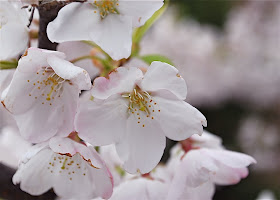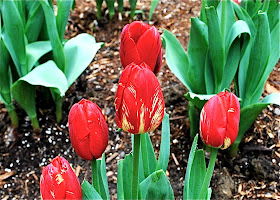
ISO 200 | Aperture f/5.6 | Shutter 1/80
Hi Everyone -
As previously mentioned, I'm taking a Digital Photography course at the International Center of Photography. There are about 15 people in the class representing an interesting mix of backgrounds. Some studied film photography in college, others want to take better photos of their kids, some love to travel, and we all want to take our picture-taking to the next level. Our instructor, Keisha Scarville, is a wonderful photographer and a deliberate, thoughtful teacher.
Over the coming weeks, my plan is to share some of the things I've learned, but there's no way I can replicate the course entirely. Although the focus is on dslr cameras, there are lessons to be learned regardless of camera-type. I really hope these posts will encourage you to experiment with your own camera settings. After all, you can always hit 'reset'.

ISO 200 | Aperture f/10 | Shutter 1/60
Controlling Exposure
In class we learned that a camera is basically a light tight box that allows a controlled amount of light in when you press the shutter to create a photo or exposure. A properly exposed photo is one that coordinates the proper combination of the following variables - ISO, aperture and shutter speed. Too much light leads to over-exposure (too bright) while too little leads to under-exposure (too dark). One of the biggest challenges I face with these settings is remembering what they all do individually and together. Finding the right balance makes me kind of feel like Goldilocks.
There are four elements to consider when taking a photo and I'm going to refer to them as the Power of How to help remember the differences. I thought of this concept on the subway and hope it works for all of us.

ISO 200 | Aperture f/8.0 | Shutter 1/250
Step 1 | ISO | How is your light?
How does the light look in your environment?
Are you outdoors? Is it sunny or cloudy? Is it night time? Are you indoors?
Based on the lighting, your first step will be to set your ISO, which is how the sensor in your camera responds to light. The higher the number the more receptivity - light allowed into the camera. The ISO can be adjusted on any camera from a point & shoot to a dslr. It is the one setting you should always control even if you set it at 100, which is probably the default for most cameras. Here are some guidelines -
- 50-200 : best in bright light, outdoors, partly cloudy
- 400-800 : low light, late afternoon, heavy overcast, indoors
- 1600-3200 : very little light, night time, indoors
Step 2 | Aperture | How is the focus?
Do you want a shallow or long depth of field?

ISO 200 | Aperture f/7.1 | Shutter 1/200
Step 3 |Shutter Speed | How long is light allowed into the camera?
Do you want to blur or freeze motion?

ISO 200 |Aperture f/5.6 |Shutter 1/200
Step 4 | Light Meter | How is the exposure to be adjusted?
Will your photo be under or over-exposed, or just right?

ISO 200 | Aperture f/5.6 | Shutter 1/200
I would definitely encourage you to try the various automatic settings on your cameras for landscape, portrait, sports, etc. just to get used to different ways of controlling the light. Overall, there's a lot to learn and plenty of crummy photos to be taken ;). Although I'm hopeful, I don't expect to take any great photos during the course as it may take a while for the new knowledge to find a comfortable home in my brain.
Let me know if you have any questions. I'll try to answer them. If I've gotten something wrong, let me know and I'll correct it.
xo, Cindy
PS Happy Birthday to my Brother and Happy Earth Day!
Source : Keisha Scarville

Happy Birthday to your brother!
ReplyDeleteCindy wow- you learned all of this in one class?! Your photos are beautiful! xoxo
Thank you so much for sharing this information with us. I get so intimidated by photography but I want to take better photos. I am starting photo lessons in another week or so with Lisa Warninger. I am so excited! Can't wait for you to share all you learn!
ReplyDeleteIt's so great I love these tips... I will try even more know that I have these steps... I also love your photos!! Have a nice week and I can't wait to see more photos!
ReplyDeletethis is wonderful - thank you for sharing what you've learned! and your photos are lovely as usual.
ReplyDeleteThanks for sharing - I feel a little more prepared to start my photography class later this week. I just hope I can pick up as much as you are.
ReplyDeleteawesome! i'm planning on buying a DSLR in the next year or so, but love getting lil tips like this to maximize my point-and-shoot. it's got a few of the basic settings like macro settings and whatnot, but i love finding more out about the finer points so i can be armed & ready when i make my purchase!
ReplyDeletelooking forward to seeing the other lessons. :)
oh AND i received the card in the mail fpr the donation that you guys had made to the MD Association. thanks again, so very much. xo
You are so, so good to us! I really needed to know the ISO tricks. Thank you!
ReplyDeletewow! What a fantastic post ms smartie pants :) thanks for sharing with us.
ReplyDeletehappy bday to your sibling.
thanks everyone and i'm glad to help. it helps me to write about it, too. i'm really not that smart .. just repeating keisha who is a pro ;)!
ReplyDeleteohhhh...how helpful are you? i can't wait to play with my camera and try all this, but i will probably have to have my computer open to your post so that i can remember it all :)
ReplyDeletehappy birthday cindy's brother!
michelle
What a beautiful classroom Cindy! I sincerely appreciate your thoughtfulness in sharing your new knowledge with us. While I love photography, I still have a tough time figuring out what controls what on my dSLR, and I usually end up randomly playing around with all of the settings to take 100 pictures to hopefully get one right. Thank you so much for sharing and for helping me finally figure all of the technicalities out!
ReplyDeleteit is daunting. we had class today with an assignment for next week and my head feels like it is going to explode. i have to remember that this is self-inflicted pain & suffering ;).
ReplyDeleteCindy, I'm loving this as much I thought I would! And the quality of your photos is reeeally great! Are these photos you have taken using your newly acquired knowledge or just happily pre-existing shots that exemplify it? More please! :)
ReplyDeleteooooooh it's so hard...
ReplyDeletei have a canon 450d and i've had it since the fall of 2008 but i still don't know how to properly use it. i just set it on automatic all the time. i do think i'm getting better at it and i find myself doing a bit more band photography so i thought about investing in a new lens that will get more light into it.
a nice blog btw! hope you would like to visit mine some time :)
i took the photos right after class. after class yesterday, i just went home and took some motrin ;)!
ReplyDeleteso fun cindy!!
ReplyDeletewow! your pics are beeeyooteeeeful and thanks so much for sharing all those tips!
ReplyDelete